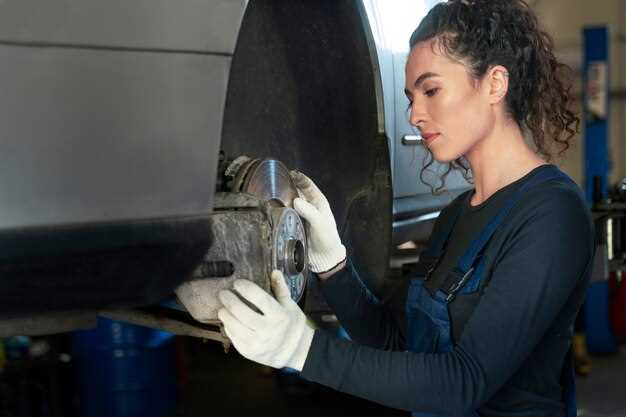
Rust is one of the most significant threats to the longevity and appearance of your vehicle. This corrosive phenomenon occurs when metal surfaces are exposed to moisture and oxygen, leading to the gradual degradation of the material. Understanding the mechanisms of rust formation is crucial for implementing effective protection strategies.
To combat rust damage, proactive measures must be taken to safeguard your vehicle’s exterior. Regular maintenance, such as washing and waxing, plays a vital role in keeping rust at bay. Moreover, identifying areas prone to rust, such as wheel wells and undercarriage components, will allow you to focus your protection efforts where they are needed most.
Investing in quality protective coatings and performing routine inspections can further enhance your vehicle’s resistance to rust. By adopting these practical tips, you can significantly extend your vehicle’s lifespan and maintain its sleek appearance, keeping rust at a distance.
Regularly Inspect and Clean Vulnerable Areas

To ensure optimal protection against rust, it is crucial to regularly inspect and clean the vulnerable areas of your vehicle. These spots, such as wheel wells, undercarriage, and around the seams and joints, are often exposed to moisture, dirt, and road salt, making them prime candidates for rust development.
Begin your inspection by looking for any signs of existing rust or corrosion. Even small areas of rust can expand quickly if not addressed promptly. Pay close attention to places where different metal parts meet, as these joints can trap moisture and debris. Use a flashlight to look into hard-to-reach areas, ensuring no section is overlooked.
After inspecting, proceed with cleaning these areas thoroughly. Utilize a pressure washer or a hose to remove dirt and debris, followed by scrubbing with a non-abrasive brush to dislodge any stubborn particles. Once clean, dry the areas completely to eliminate moisture, which is a key factor in rust formation.
For added protection, consider applying a rust-inhibiting spray or wax to the cleaned areas. These products create a barrier that helps prevent moisture from reaching the metal surfaces, significantly reducing the risk of rust damage. Regularly scheduled inspections and cleaning will greatly enhance your vehicle’s longevity and maintain its appearance. Stay proactive to safeguard against rust and ensure your vehicle remains in top condition.
Apply Quality Rust Inhibitors and Sealants

To enhance the prevention of rust damage on your vehicle, applying quality rust inhibitors and sealants is crucial. These products create a protective barrier that prevents moisture and corrosive substances from reaching the metal surfaces of your car.
Choose rust inhibitors specifically designed for automotive use, as they offer superior protection against rust formation. Look for formulations that can be applied easily and adhere well to various metal surfaces. Many of these products also contain additives that provide additional resistance to chemical exposure and UV degradation.
In addition to rust inhibitors, sealants play a vital role in safeguarding your vehicle. They seal gaps and seams where rust commonly originates, offering another layer of protection. Applying a quality sealant ensures that water cannot infiltrate vulnerable areas of your vehicle, ultimately enhancing its lifespan.
Regular application of these protective treatments, especially after washing your vehicle or in humid environments, will significantly improve rust prevention efforts. Prioritize the maintenance of your vehicle’s exterior by investing in high-quality rust inhibitors and sealants to safeguard your investment against corrosion and deterioration.
Maintain Proper Drainage and Moisture Control
Proper drainage and moisture control are crucial for the prevention of rust damage to your vehicle. Moisture accumulation can occur in various parts of the car, especially during rainy seasons or in humid climates. Ensuring that water does not pool around critical components is essential for long-term protection.
Regularly inspect the undercarriage and wheel wells for any debris that may obstruct drainage holes. These areas must remain clear to allow water to escape freely. Additionally, check door seals and weather stripping for any wear or damage that could let moisture in.
Consider applying a high-quality rust inhibitor to areas prone to rust. This creates a barrier against moisture while enhancing the vehicle’s overall protection. Furthermore, storing your vehicle in a dry, well-ventilated space helps minimize exposure to moisture and reduces the risk of rust development.
By prioritizing proper drainage and moisture control, you can significantly extend the life of your vehicle and maintain its structural integrity against rust damage.


